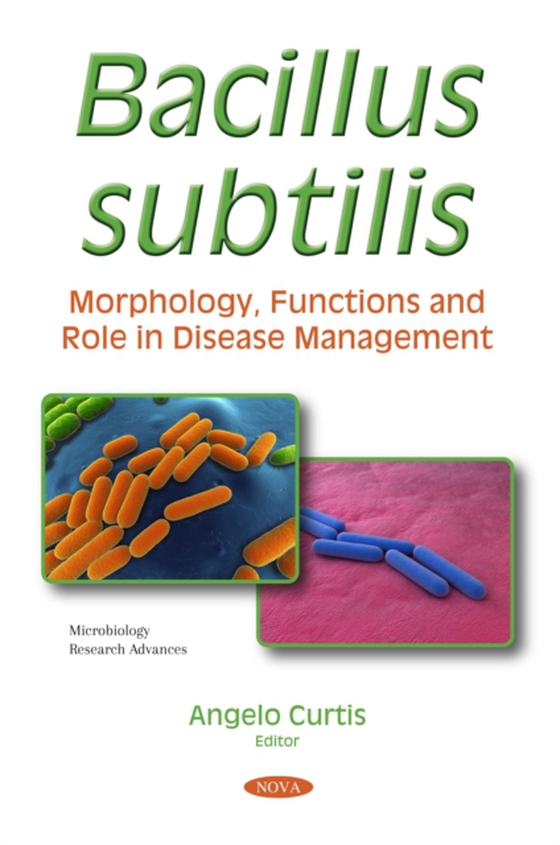
Bacillus subtilis: Morphology, Functions and Role in Disease Management e-bog
1240,73 DKK
(inkl. moms 1550,91 DKK)
Bacillus subtilis is a motile gram-positive bacterium widespread in the soil and the gut of animals which has been reported to cause opportunistic infections in immunocompromised patients. In Bacillus subtilis: Morphology, Functions and Role in Disease Management, the authors begin by outlining the main features of chemotaxis as a behaviour, then reviewing the molecular machinery Bacillus subti...
E-bog
1240,73 DKK
Forlag
Nova
Udgivet
27 december 2018
Længde
165 sider
Genrer
MMFM
Sprog
English
Format
pdf
Beskyttelse
LCP
ISBN
9781536145144
Bacillus subtilis is a motile gram-positive bacterium widespread in the soil and the gut of animals which has been reported to cause opportunistic infections in immunocompromised patients. In Bacillus subtilis: Morphology, Functions and Role in Disease Management, the authors begin by outlining the main features of chemotaxis as a behaviour, then reviewing the molecular machinery Bacillus subtilis uses to sense and respond to chemical cues. Following this, the authors discuss how bacterial biofilms can form on biotic and abiotic surfaces, developing various reversible and irreversible stages depending on environmental conditions. An important characteristic of biofilm is the extracellular matrix, which is usually formed by exopolysaccharide and extracellular proteins by Bacillus subtilis. Next, this compilation highlights the key features in Bacillus subtilis lipopeptides as eco-friendly controllers of plant pathogens. Currently, phytopathogens impact all agricultural systems, leading to economic losses worldwide. The closing chapter discusses NKCP a novel dietary supplement derived from traditional Japanese traditional food, which improved patients' symptoms and blood pressure by improving blood flow through antithrombotic and fibrinolytic properties.
 Dansk
Dansk

